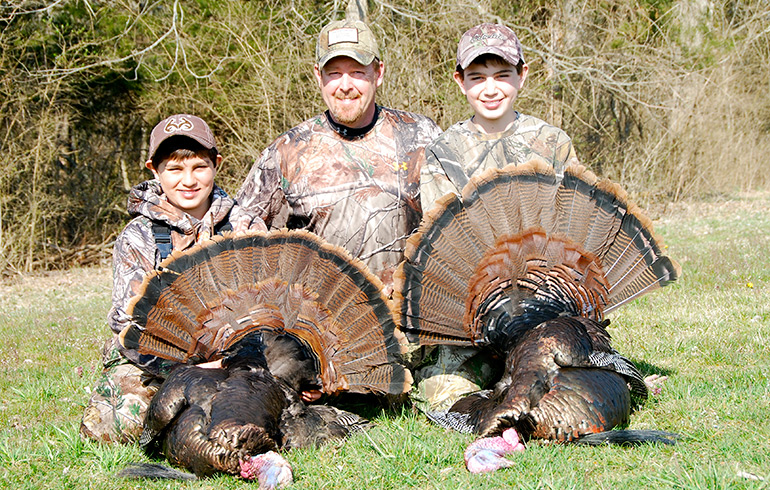Turkey Hunting’s Great Debate
If you walk into a diner in the South during mid-April around lunchtime and ask the general population, “What is the best shot size to hunt turkeys with?,” you may just start a full scale riot.
If not, you will surely spark a heated discussion that will vary with every opinion, and one that could rage on for hours.
One of the great arguing points between turkey hunters for decades has been whether #4, 5 or 6 shot is superior. I must admit that I have indulged in this debate a number of times, but I am not sure there is a clear cut, “right” answer. Let’s look a bit deeper…

No doubt any of these shot sizes will anchor a gobbler if they penetrate his skull or spinal column. As far as size and weight go, #4 lead is.13”, 11 gd (grams/cubic centimeter), #5 lead is .12”, 11 gd, #6 lead is .11”, 11 gd. The relative weight is the same, but the size makes the actual weight difference per pellet. The number of pellets in each shell obviously varies by shot size as well. In a Winchester 12 gauge 3” shells, there are 236 #4’s, 298 #5’s and 394 #6’s on average.
All of these loads have a velocity of 1200 feet per second, but obviously the larger shot will retain energy down range a bit better. Winchester has done extensive testing on its Longbeard XR ammunition, and any of the 3 offerings definitely have enough power and penetration to cleanly harvest a turkey out to 60 yards.
So there is a lot of technical information, but no real answer to our main question. I have always been a stickler for patterning my guns, so the answer lies here. You truly need to take your gun and choke combination and test all 3 shot sizes. Some guns of the same make and model will prefer starkly different loads.
I like to shoot my guns at 25, 40 and either 55 or 60 yards with all the shot sizes. It is generally apparent at 40 yards which size your gun prefers. I draw a 10” circle around the center point and simply look at how even the distribution is and count pellets. There will be many more 6’s than 4’s on your paper, but consider your coverage and how even your patterns are.
Once I have decided on a load, I shoot at 25 yards just to see how tight the pattern is at that range, and then I shoot out to 55 or 60 yards to see how my pattern holds up. I want a minimum of 100 pellets in my circle at the longest range I plan to shoot to feel comfortable shooting a gobbler that far. I want to kill turkeys cleanly, and after all, getting them in close is the fun part. To me knowing my maximum range is just like insurance.
I have 2 turkey guns that I hunt with the most, and one prefers #5 shot, and it is set up with Winchester Xtended Range High Density. It patterns great at 60 yards, and I have killed a lot of turkeys over 50 paces with it. When Longbeard XR came out, I found that my main turkey gun shot both the #5’s and 6’s very well, so I decided on #6’s because of the huge number of pellets, and I know they have plenty of knock down at 55 yards to kill a turkey. Actually that load out of that gun shoots a better pattern at 60 yards than any other combo I have ever shot at 50 yards. It is absolutely devastating!
So what shot size should you shoot? Only you can answer that question by doing your homework at the patterning board. Get a couple friends together, everyone buy a box of Longbeard XR in a different size, and go out and find exactly what your gun prefers and how far you can shoot ethically. If three of you go to the range, you may come back with three different but “right “ answers.
The author’s twins took these KY gobblers at 11 and 47 yards. Knowing how your gun shoots at different ranges is very important.




